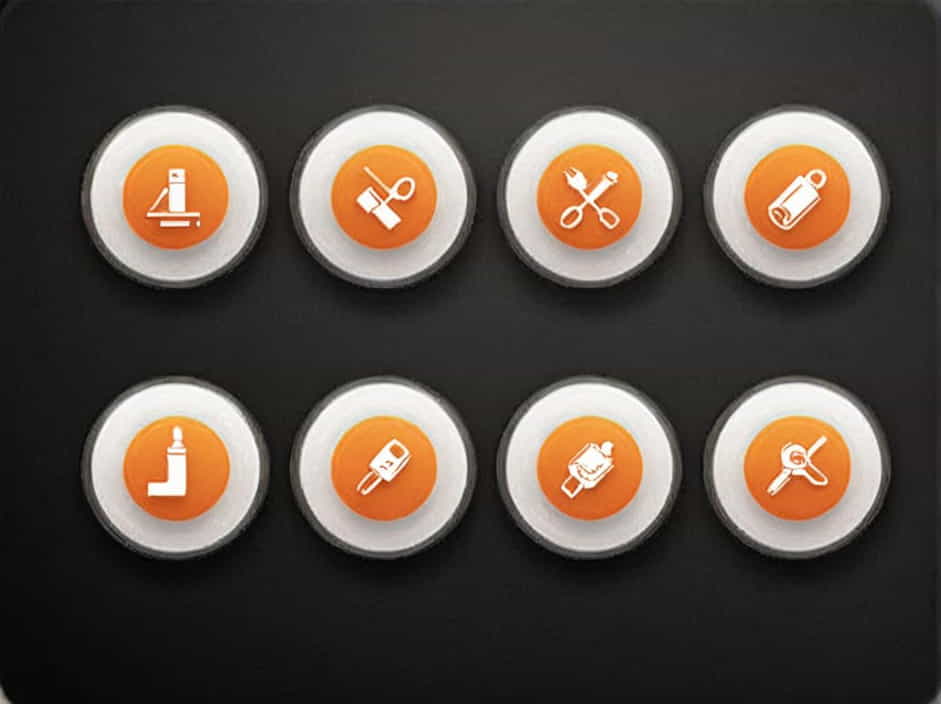Maintenance plays a crucial role in ensuring the efficiency, reliability, and longevity of equipment, machinery, and infrastructure. It involves various strategies to prevent failures, minimize downtime, and enhance performance.
In this topic, we will explore the different types of maintenance, their importance, and how they are applied in various industries.
1. Preventive Maintenance (PM)
Definition
Preventive maintenance is a proactive approach that involves regular inspections, servicing, and repairs to prevent unexpected failures.
Key Features
- Scheduled at fixed intervals (daily, weekly, monthly).
- Helps identify and fix potential issues before they become major problems.
- Reduces the risk of sudden equipment breakdowns.
Examples
- Changing engine oil in vehicles.
- Cleaning and lubricating machine parts.
- Inspecting electrical connections in buildings.
2. Predictive Maintenance (PdM)
Definition
Predictive maintenance uses technology and data analysis to predict when equipment might fail. Sensors and monitoring tools help detect early warning signs of deterioration.
Key Features
- Relies on condition-based monitoring.
- Uses sensors, artificial intelligence, and machine learning.
- Reduces maintenance costs by avoiding unnecessary repairs.
Examples
- Vibration analysis in rotating machinery.
- Thermal imaging to detect overheating components.
- Oil analysis to check contamination levels.
3. Corrective Maintenance (CM)
Definition
Corrective maintenance involves fixing or repairing equipment after a failure has occurred. It is a reactive approach used when unexpected breakdowns happen.
Key Features
- Carried out after an issue is detected.
- Helps restore equipment to operational condition.
- Can be costly if failures lead to extended downtime.
Examples
- Replacing a burnt-out motor in an industrial machine.
- Fixing a broken pipeline after a leak.
- Repairing a malfunctioning air conditioning unit.
4. Condition-Based Maintenance (CBM)
Definition
Condition-based maintenance is performed only when necessary, based on real-time monitoring of equipment conditions. It helps reduce maintenance costs by avoiding unnecessary servicing.
Key Features
- Uses data from sensors to assess equipment health.
- Maintenance is performed only when performance declines.
- Prevents unnecessary downtime and expenses.
Examples
- Replacing filters only when pressure drops.
- Servicing HVAC systems based on air quality readings.
- Monitoring the temperature of industrial furnaces.
5. Predictive vs. Preventive Maintenance
| Feature | Preventive Maintenance | Predictive Maintenance |
|---|---|---|
| Approach | Scheduled at intervals | Based on real-time data |
| Cost | Higher due to frequent servicing | Lower due to targeted repairs |
| Equipment Life | Extended due to regular care | Optimized by avoiding over-maintenance |
6. Emergency Maintenance
Definition
Emergency maintenance is performed immediately after a sudden failure to restore operations as quickly as possible.
Key Features
- Unplanned and urgent.
- Disrupts normal workflow and production.
- Can be expensive due to emergency service costs.
Examples
- Fixing an electrical short circuit in a factory.
- Repairing a major pipeline burst.
- Restoring a failed power supply in a hospital.
7. Scheduled Maintenance
Definition
Scheduled maintenance follows a predefined timetable, ensuring regular servicing of equipment to prevent failures.
Key Features
- Pre-planned with specific dates.
- Helps avoid unexpected breakdowns.
- Often combined with preventive maintenance.
Examples
- Annual inspections of fire safety equipment.
- Periodic servicing of industrial machinery.
- Regular software updates for computer systems.
8. Breakdown Maintenance
Definition
Breakdown maintenance is performed only after equipment fails completely. It is a reactive approach that is used when preventive or predictive maintenance is not implemented.
Key Features
- No maintenance is performed until failure occurs.
- Can cause high repair costs and downtime.
- Often used for non-critical equipment.
Examples
- Replacing a dead battery in a remote sensor.
- Repairing a failed conveyor belt in a factory.
- Restoring an air conditioning unit after it stops working.
9. Total Productive Maintenance (TPM)
Definition
Total productive maintenance (TPM) is a holistic maintenance approach that involves all employees in maintaining equipment reliability.
Key Features
- Focuses on continuous improvement.
- Employees are trained to handle minor maintenance tasks.
- Aims to achieve zero breakdowns and defects.
Examples
- Workers inspecting machines before starting shifts.
- Cleaning and lubricating equipment after use.
- Implementing a workplace maintenance culture.
10. Run-to-Failure Maintenance (RTF)
Definition
Run-to-failure maintenance allows equipment to operate until it completely fails, after which repairs or replacements are carried out.
Key Features
- Used for non-critical equipment.
- No maintenance is performed until failure occurs.
- Helps save costs on unnecessary servicing.
Examples
- Allowing light bulbs to burn out before replacing them.
- Running a non-essential motor until it fails.
- Using disposable air filters until they clog.
Understanding the different types of maintenance helps businesses and industries optimize operations, reduce costs, and improve equipment reliability. By implementing the right maintenance strategy—whether preventive, predictive, or corrective—organizations can enhance safety, efficiency, and productivity.
